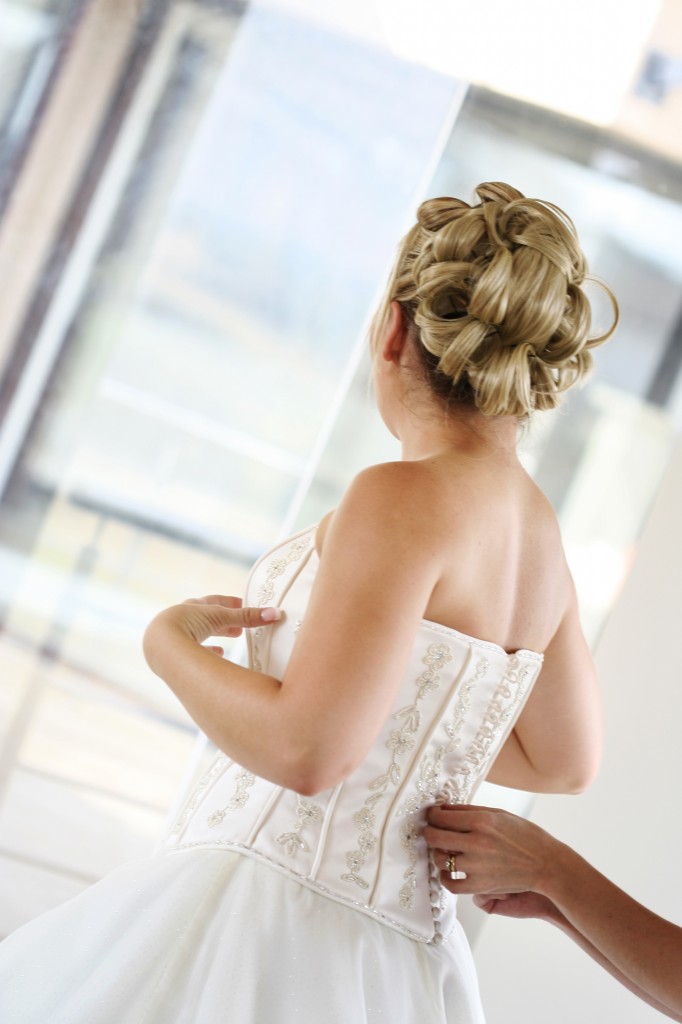You can spend a pretty penny on the perfect shade for your tresses. So you want to make sure you don’t wash all that cash and color down the drain. What can you do to keep that color where it belongs?
When you dye your hair, the pigments are held captive inside the hair strands, says Ni’Kita Wilson, a cosmetic chemist and vice president of research and innovation at Englewood Lab. But anything that can lift the hair shaft’s cuticle, allowing pigment particles to escape, can fade that pretty color. One of the biggest color-stealing culprits? H2O. “Plain water dilutes the pigment and causes it to fade faster,” Wilson says. But before you vow to never wash your strands again, try these pigment-protecting tricks.
Wear a hat. Protecting your hair from the elements helps prevent the formation of free radicals, atoms or molecules that contribute to fading when they snatch electrons from pigment molecules. Wear a sun hat when you’re outdoors for a long time, or look for leave-in treatments with UV absorbers that filter some of the color-ruining rays — like benzophenone-3 or -4, polyquaternium-59, cinnamidopropyltrimonium chloride, and butyl methoxydibenzoylmethane.
Two to try: Garnier Fructis Color Shield Color Sealer Lightweight Leave-In ($5.99) and ColorProof FiberBlast Texture Crème ($21.95).
Rethink going red. While show-stopping, red hair colors fade the fastest because crimson pigment molecules are larger than browns and blacks, and the most unstable.
Suds up less frequently. The more you wash your hair, the faster your color will fade. Shampooing causes the hair strands to swell, and the color then washes out little by little. If you need to shampoo often, invest in products such as John Frieda Sheer Blonde Highlight Activating Enhancing Shampoo ($5.99) or Aveda Clove Color Conditioner for brunettes ($18) that deposit dye onto your hair, essentially re-coloring it a little each time you wash.
Use color-protecting shampoo and conditioner. “Traditional products don’t take away from the color — they just don’t add anything,” says Wilson. Wash and condition your strands with products formulated to be protective, like Pantene Pro-V Color Expressions Shampoo ($6.49) or Redken Color Extend Conditioner ($15.50) — they work by sealing your hair cuticle so your strands hold on to the dye inside. And, unless it’s the day before a color refresh, don’t use clarifying shampoo, which can strip strands and speed up the color fade process.
Keep it cool. Steaming hot water definitely has an effect on strands. Wet hair has more stretch than dry hair, and the “stretchiness” of hair increases with the water temperature. This indicates the hair structure is more relaxed, which can allow more pigment to escape. So wash with lukewarm water or (gasp!) cool H2O.
Pool rule. Chlorine is a major culprit in fading hair dye. Apply a little deep conditioner to your locks before you dive in to protect and moisturize the hair. Then add a swim cap over the conditioner for an extra layer of protection.
Expert Tip
“Here’s a little secret: Deep condition your hair after you dye it to offset the damage from the process. It works every time.” — Ni’Kita Wilson, cosmetic chemist


